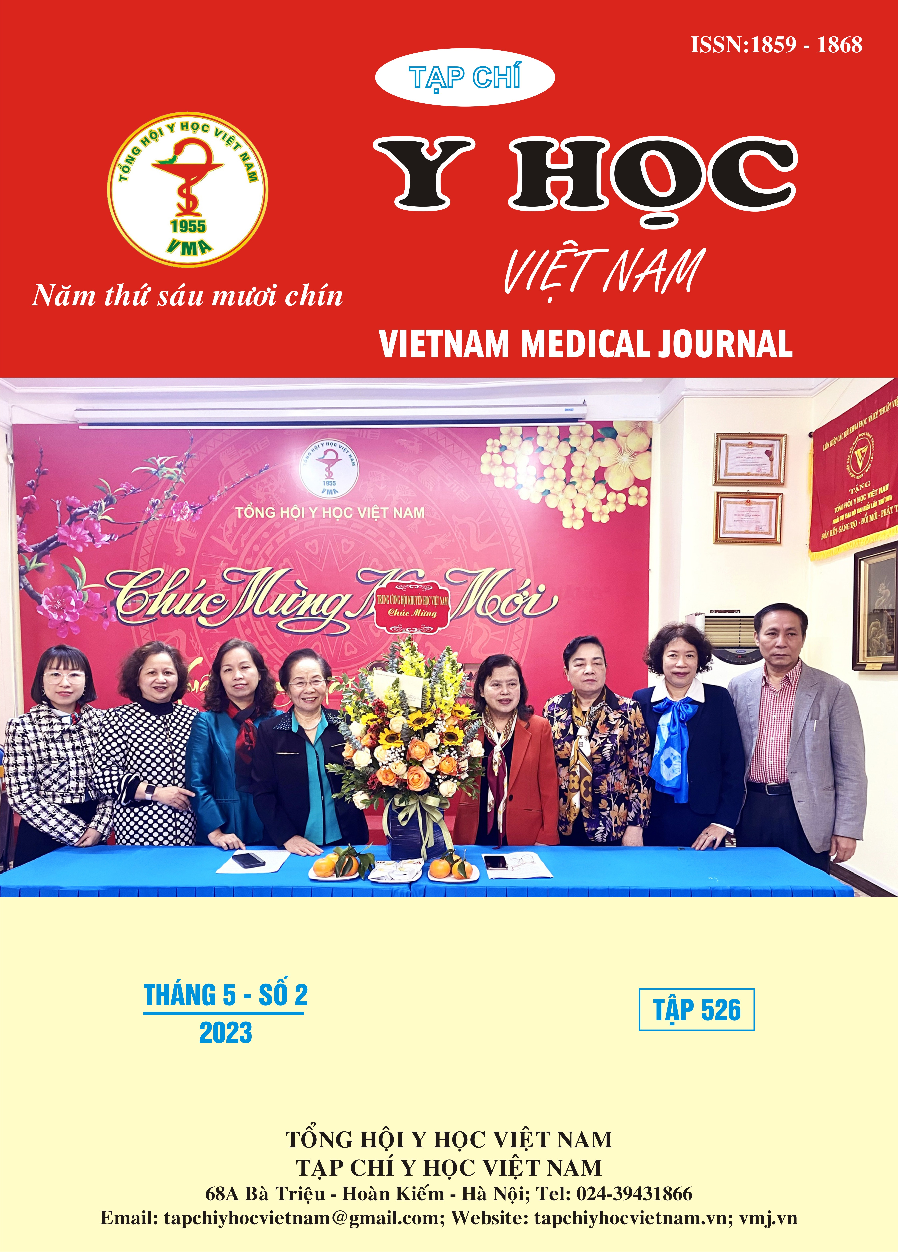CLINICAL, PARACLINICAL CHARACTERISTICS AND RESULTS OF DUCTAL CLOSURE TREATMENT IN PRETERM NEONATES WITH PATENT DUCTUS ARTERIOSUS AT HAI PHONG CHILDREN'S HOSPITAL IN 2021 - 2022
Main Article Content
Abstract
Objectives: To describe the clinical and subclinical characteristics of preterm neonates with patent ductus arteriosus (PDA) at Hai Phong Children's Hospital from January 1, 2021 to April 30, 2022 and to comment on treatment results for closing PDA of the above children with medications. Subjects and methods: a retrospective study describing a series of cases by means of convenience sampling including all eligible patients for the study. Results: Gestational age at birth of the group of children with PDA in this study mainly concentrated in the group of 28 - <34 weeks of age (77.8%), mainly in female children. Most children were admitted to the hospital before the age of 24h with birth weight £2000g. The most common clinical symptoms were a bouncing pulse, active precordium and a systolic murmur. Co-morbidities on admission were mainly endocardial disease, transient tachypnea and pneumonia. 32/72 children were prescribed medical treatment with parenteral paracetamol. In the treatment of closure of PDA with parenteral paracetamol, the indices: left atrial size, LA/Ao ratio, lung diameter and aortic diameter of the ductus arteriosus were all significantly reduced. There were 28/32 children who were treated with parenteral paracetamol for successful tube closure. The duration of oxygen support in this group of children was significantly shorter than in the group that failed to close the ductus arteriosus. Conclusion: PDA was common in infants born <34 weeks premature with low birth weight. Treatment of tube closure with parenteral paracetamol gave good results and no side effects were noted. Further studies with larger sample sizes are needed.
Article Details
Keywords
patent ductus arteriosus, neonate, premature birth, paracetamol
References
2. Bộ Y tế. Hướng dẫn chẩn đoán và điều trị các bệnh thường gặp ở trẻ em. 2015.
3. Đặng Quang Minh. Nghiên cứu đánh giá kết quả điều trị và tiến triển bệnh còn ống động mạch ở trẻ đẻ non tại Bệnh viện Nhi Trung ương. Luận án Tiến sỹ Y học, Đại học Y Hà Nội; 2012.
4. Nguyễn Thị Anh Vy. Đánh giá hiệu quả điều trị bệnh còn ống động mạch bằng indomethacin ở trẻ sơ sinh non tháng tại bệnh viện Nhi Trung ương năm 2005-2006. Luận văn Thạc sỹ Y học, Đại học Y Hà Nội; 2006.
5. Dani C, Poggi C, Mosca F, et al. Efficacy and safety of intravenous paracetamol in comparison to ibuprofen for the treatment of patent ductus arteriosus in preterm infants: study protocol for a randomized control trial. Trials. Apr 2 2016;17:182. doi:10.1186/s13063-016-1294-4
6. Ohlsson A, Shah PS. Paracetamol (acetaminophen) for patent ductus arteriosus in preterm or low birth weight infants. The Cochrane database of systematic reviews. Apr 6 2018;4(4):Cd010061. doi:10.1002/14651858.CD010061.pub3
7. Mashally S, Banihani R, Jasani B, et al. Is late treatment with acetaminophen safe and effective in avoiding surgical ligation among extremely preterm neonates with persistent patent ductus arteriosus? Journal of Perinatology. 2021/10/01 2021;41(10):2519-2525. doi:10.1038/s41372-021-01194-4
8. Nguyễn Hùng Tiến. Đặc điểm lâm sàng, cận lâm sàng và hiệu quả đóng ống động mạch bằng paracetamol đường uống ở trẻ sơ sinh non tháng. Luận văn tốt nghiệp bác sĩ nội trú. Trường Đại học Y Dược Hải Phòng; 2013.


